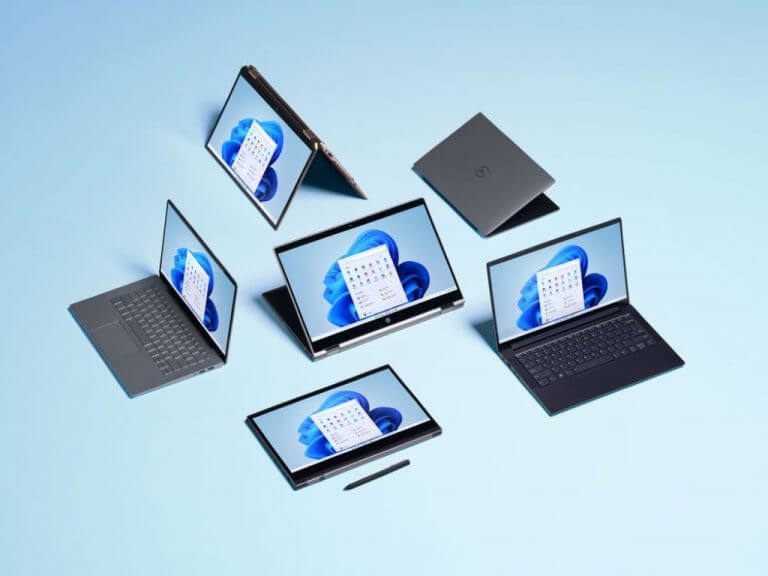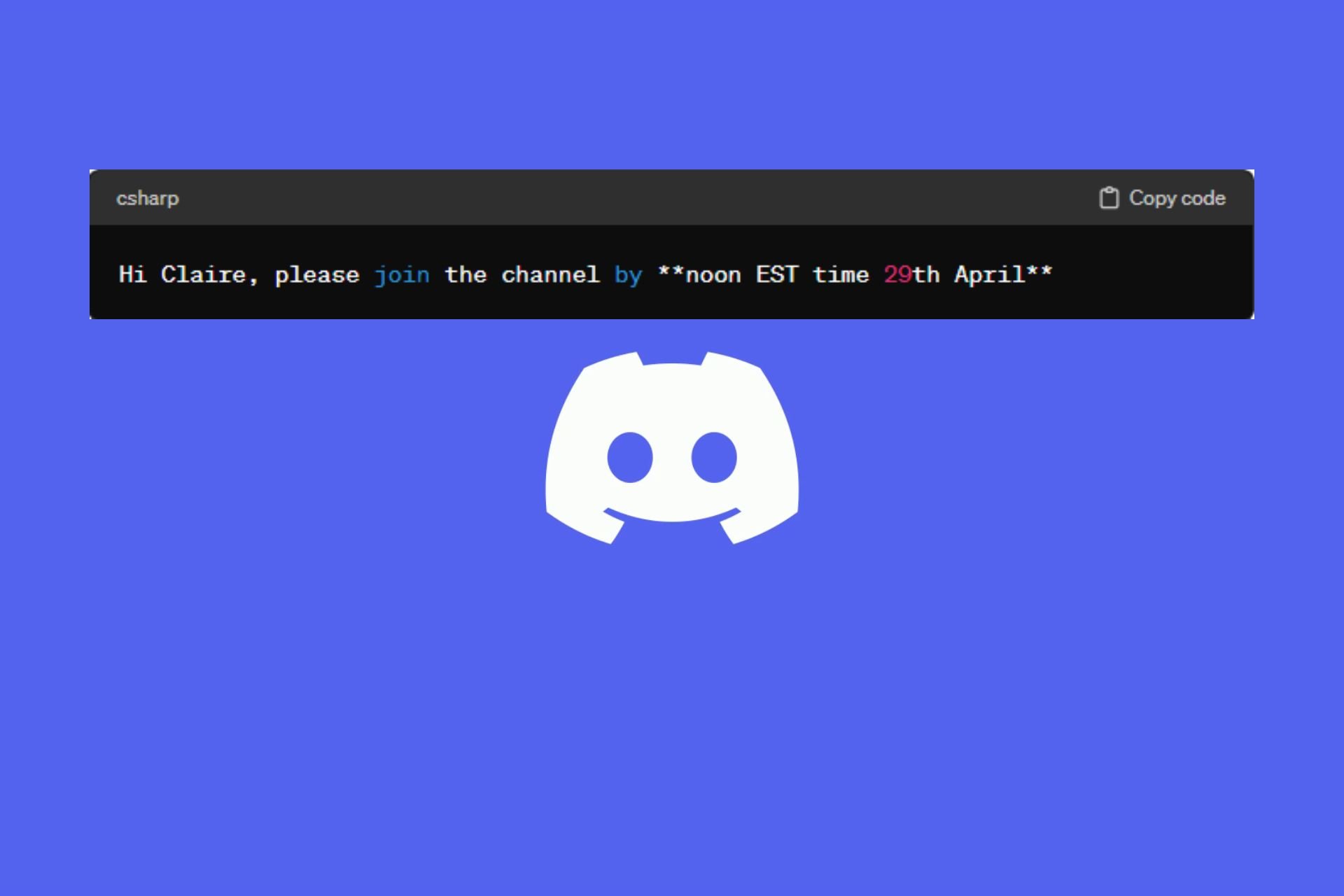OnMSFT Roundtable: Our thoughts on Windows 11 (they’re not all good)
11 min. read
Published on
Read our disclosure page to find out how can you help Windows Report sustain the editorial team Read more

First and foremost, the OnMSFT team are Microsoft enthusiasts, with both experience and viewpoints on what works and what doesn’t in the world of Windows and beyond. In this roundtable, we asked our writers to say a few words about Windows 11, now that it’s officially launched. We’ve been following Windows 11 since well before it was first announced, of course, and have been both using it and writing about it for quite some time. Here’s some of our thoughts, in no particular order:
Kareem Anderson
Windows 11 is a mixed bag of learned lessons from the Windows team over the years as well some head scratching missed opportunities in my opinion. Having tested Windows for over the past four months on various devices and form factors, I appreciate the consistent nature of the operating system. Windows 11 has routinely run smoother no matter the device or the specs. From a Surface Go 2 to a 32GB NVIDIA Quadro RTX enabled workstation, the animations and system processing are concretely improved.
When I refer to learned lessons, it’s clear the Windows team took to heart transitioning from one operating system to the next and kept much of the core of Windows 10 the same. People moving from Windows 10 should find Windows 11 welcoming, unlike the transition from Windows 8.1 to Windows 10 where full sections and functionality were replaced, deprecated or simply gutted. For the most part, things like files, apps, and settings are just were users left them, that is both a good and an irksome thing for users like myself, which leads me to the point of missed opportunities.
Once again Microsoft has an opportunity to spearhead cohesion and vision, and while the bits and pieces of UI design appear amid a fog of choices for vision, the overall cohesion of the operating system is still missing, at least this early on. I’ll admit I don’t know the first thing about the Windows 11 roadmap or personal engineer responsibilities, but I would like to see the company dedicate the resources to a full time team that just updates the entirety of the context menus, prompts, and dialog boxes in Windows, another to modernize the Task Manager, and one to update the mobile experience.
Yes, icons get spread out, and ribbon items enlarged, but there is so much more to mobile computing than being able to touch an item on screen and the way Windows 11 operates on tablet screens, i.e. it’s flagship device the Pro 8, should exude vision, rather than what I see as lazy development.
Windows 11 looks great. It feels better to use than Windows 10 and I don’t see myself ever going back, but if some users scratch a little too deep, they may find the same annoyances they had with Windows 10, Windows 8 or even Windows 7 still there, and that’s where I think going forward, the vision for what Microsoft wants to do with its operating system is now more important than ever.
Abhishek Baxi
I hate to use the oft-repeated marketing term, but Windows 11 does feel modern and built for the times. It’s neater, and in many places, more visually appealing. The core is familiar and hence the upgrade is not jarring, but the fresh coat of paint is an interesting way forward. However, it is start of the journey and not the destination, because there are too many inconsistencies and a set of annoyances that most Windows users – and not just power users – will struggle to wrap their head around.
One good thing of this refreshed strategy is that there’s neither Windows 10X nor something like Tablet Mode on Windows 10. It’s just one experience for devices of all form factors, touch or no-touch, with the good things from all of those assorted in a unified manner.
For me, the ‘everyone’s invited’ approach to Microsoft Store is a winner, and we’re already seeing major apps (and Epic Games) getting on to the store even before day one. Of course, long way to go still. The store experience and the limited catalogue was one of the weaker points of Windows 8/10. The work done on the store, including the strategic shift, should make it more convenient for Windows users to shop for apps and augment their operating system with the tools they need for work and leisure.
 Laurent Giret
Laurent Giret
The release of Windows 11 is a good opportunity to look back at previous versions of Windows. People loved Windows XP, but they hated Vista. They also loved Windows 7, but Windows 8 was probably even more controversial than Vista.
Windows 10 also had its faire share of controversy with forced, sometimes buggy upgrades, and there was also a lot of FUD around the telemetry you can’t completly disable. Still, Windows 10 is generally seen as a solid OS, and many expected it to be the “last version of Windows” ever.
Back in 2014, the road towards Windows 10 was quite exciting: There was the launch of the Windows Insider program, and the promise of universal apps that would work on PCs, tablets, and phones. In many ways, Windows 11 seems to be a less ambitious hybrid of Windows 10 and Windows 10X, the simplified Windows-based OS for dual-screen PCs and Chromebook-like devices that Microsoft eventually scrapped.
Windows 10X still lives on in Windows 11, but if nice touches of polish make a good first impression, I’m afraid most users won’t like the changes made to core features like the Start Menu and Taskbar. I also wouldn’t be surprised if the new Widget Menu and Chat app eventually fade away like Cortana or Windows 10’s Timeline feature.
In retrospect, I see Microsoft’s Chief Product Officer Panos Panay doing the same thing that Jony Ive did at Apple after taking over the design of iOS and macOS. Back then, many hardcore Mac fans complained about the “iOSification” of macOS, and I do see some of that in Windows 11, with a Windows 10X twist.
All in all, Windows 11 is going to be polarizing release, especially with all the kerkuffle about the minimum system requirements. As it turns out, you can install the OS just fine on unsupported PCs, but will you really want to do that? I’m can’t really highlight a single killer feature right now, though there’s definitely some good things for PC gamers with the new DirectStorage API and AutoHDR feature.
Arif Bacchus
I haven’t used a Windows version like Windows 11 since Windows 7. From rounded corners to glass-like Fluent Design effects, the operating system looks and feels beautiful. I know there are some controversies with the hardware requirements, but it should not be stealing the spotlight. Windows 11 brings many useful features and thanks to tweaks to the touch keyboard, inking, it matches hardware with software, especially on a tablet or flagship devices like the Pro 8 & Surface Laptop Studio. Productivity is also at the forefront, and Snap Groups is such a time-saving Windows feature, as is the nifty feature where Windows remembers what you had on your monitor when you plug/unplug. Even entertainment comes first in Windows 11, with useful features like Widgets, and a revamped Microsoft Store. It’s the small things that matter, and while there are things that could use fixing in Windows 11, Microsoft is on a path to success, and it can only get better here on out.
Brad Stephenson
I’ve been using Windows 11 for the past month or so and I’d be lying if I said I wasn’t regretting the upgrade. While Microsoft’s new operating system is noticeably faster at loading apps and running in general on my Surface Pro 7 than Windows 10 was, Windows 11 feels a lot less efficient when it comes to performing basic tasks and my productivity has been noticeably affected by several of the design changes.
The ability to simply swipe in from the right side of the screen to bring up the Action Center was a feature that I used multiple times a day (even per hour) in Windows 10 to adjust screen brightness, volume, devices, internet connectivity, you name it. Windows 11 replaced this with a bland calendar, which serves very little purpose, and moved the Action Center’s functionality into a menu that has to be activated by tapping the small volume icon in the taskbar. Not only is this incredibly inconvenient when using both a mouse and touch gestures but it also now makes it impossible to adjust the volume and screen brightness when the taskbar is hidden such as when playing a video game or watching a movie.
In Windows 10, you could simply swipe in from the right and adjust the settings. In Windows 11, you need to pause what you’re doing, exit full screen, tap a small icon without touching the ones next to it, adjust your settings, and then get back to the movie or game. It’s a mess.
Another frustrating change is the removal of Live Tiles. Since upgrading to Windows 11, I’ve missed two business events and a family member’s birthday because I was so used to seeing events in the Calendar Live Tile every time I opened the Start Menu to select an app throughout the day. Windows 11 has attempted to replace Live Tiles with widgets but these have been relegated to their own menu which I genuinely keep forgetting exists. The appeal of Live Tiles was that they showed information to users while they were going about their usual tasks. I’m not going to open a widget menu to check information. I may as well just open an app and that defeats the purpose entirely. The obvious solution to this is to merge the widget and Start Menu together but I’m not holding my breath.
Right now, Windows 11 feels like a faster version of Windows 10 with half of the functionality. Operating systems rarely launch in a perfected state but I sure do wish that Microsoft had gotten closer than they are right now.
Kip Kniskern
My first reactions to Windows 11 aren’t about the refreshed UI (which is nice, for the parts that are actually refreshed), or the upcoming Android apps (because who is going to actually *use* Android apps on a PC?), but what this all means for Windows 10, and how Windows 10 and 11 get along.
Microsoft has emphasized that Windows 10 still has some five years of support left, and has made a path forward difficult if not impossible for older hardware, meaning that we’re going to exist in a duopoly of Windows versions for years to come. Will Windows 10 become more Windows 11-like? What happens to apps?
Microsoft has said the new Store (perhaps one of Windows 11’s best features), along with other refreshed Windows 11 apps, will be coming to Windows 10. Does that mean they’ll sport the same Windows 11 look? Will Microsoft maintain two UIs for apps, or will Windows 10 become even more visually inconsistent?
And what happens to the code base? We’re not sure if Windows 11, which is so far mostly Windows 10 under the hood, will remain so, or if the two operating systems will fork (if they have already).
The question isn’t really how similar Windows 10 and 11 are now, it’s how similar will they be in 4-5 years. As it stands now, even with a slightly relaxed stance on hardware requirements, most of enterprise isn’t going to rush to upgrade to Windows 11. Instead they’ll stick with their perfectly good stable of 6th or 7th gen processors, and Windows 10. Microsoft is going to have to make it a lot harder to stay on Windows 10, or to put it another way, a lot more compelling to upgrade to Windows 11, in order to move the install base toward anything like what Windows 10 has now.
What do you think?
Like us, many of you have had your hands on Windows 11 for months, and have formed opinions on the latest OS from Microsoft. So, what do you think? Let us know in the comments below

 Laurent Giret
Laurent Giret







